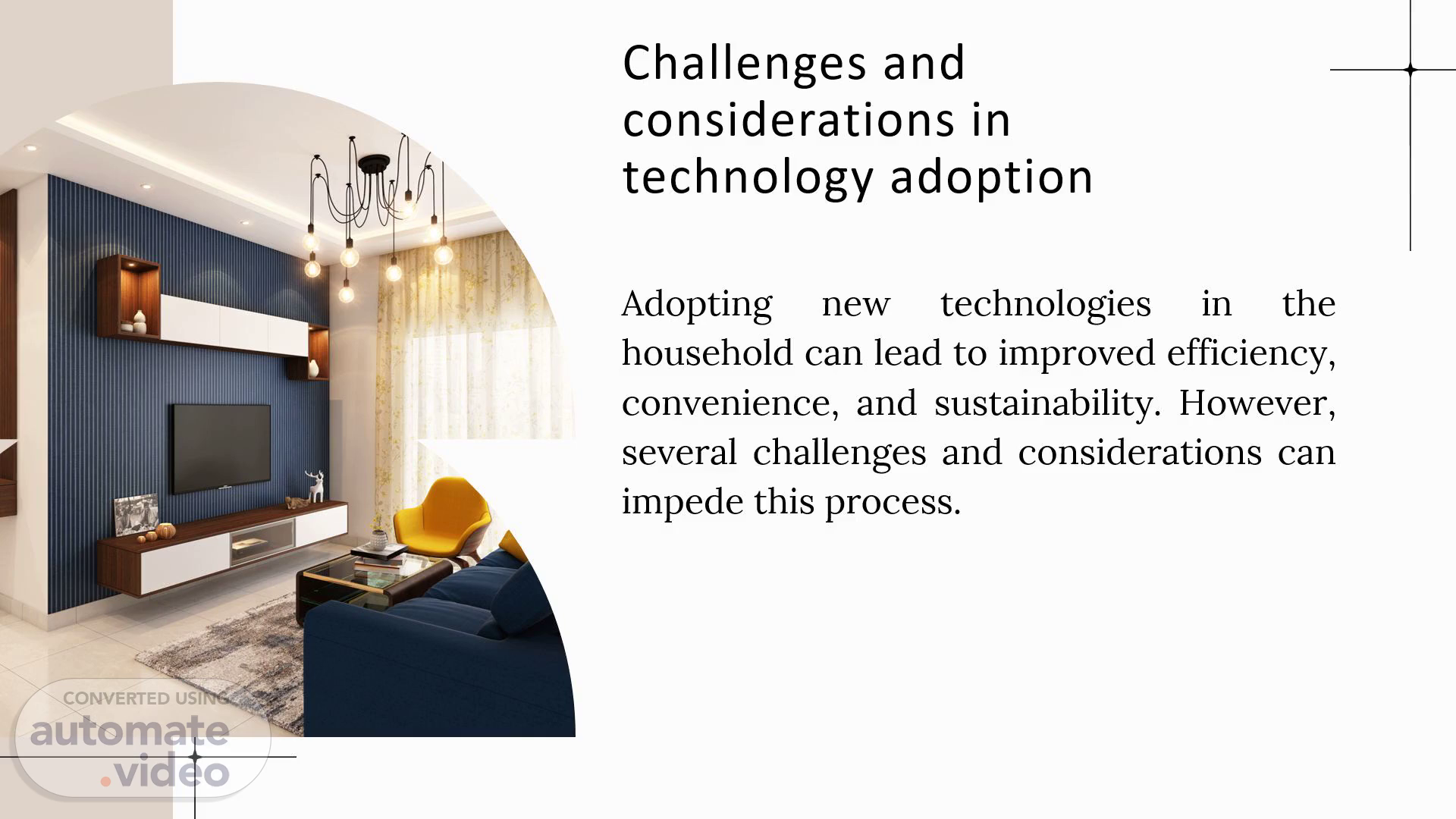Scene 1 (0s)
[Audio] Challenges and considerations in technology adoption Adopting new technologies in the household can lead to improved efficiency, convenience, and sustainability. However, several challenges and considerations can impede this process..
Scene 2 (16s)
[Audio] Key Challenges in Technology Adoption 1. Perceived Complexity Many consumers find new technologies, especially smart appliances and home automation systems, complex and intimidating. This perceived complexity can deter potential adopters from engaging with these technologies. To overcome this barrier, manufacturers should focus on user-friendly designs and provide clear instructions and support..
Scene 3 (49s)
[Audio] 2. Financial Constraints The initial cost of purchasing smart appliances or energy-efficient technologies can be a significant barrier for many households. High upfront costs may lead consumers to perceive these technologies as unnecessary expenses rather than investments in long-term savings. Offering financing options or incentives can help alleviate this concern..
Scene 4 (1m 13s)
[Audio] 3. Lack of Awareness and Education Many consumers may not fully understand the benefits of adopting new technologies or how they can improve their daily lives. For instance, individuals might not realize how smart thermostats can optimize energy use and reduce bills. Educational campaigns that highlight the advantages of these technologies can encourage adoption..
Scene 5 (1m 37s)
[Audio] 4. Concerns About Data Privacy and Security With the rise of connected devices, concerns about data privacy and security have become prominent. Many consumers worry about unauthorized access to their personal information through smart appliances. Addressing these concerns requires manufacturers to prioritize robust security measures and transparently communicate their data protection practices.
Scene 6 (2m 4s)
[Audio] 5. Resistance to Change Households often have established routines and practices that may be disrupted by new technology. This resistance to change can stem from comfort with existing systems or fear of the unknown. Encouraging gradual integration of new technologies—starting with simpler devices—can help ease this transition.
Scene 7 (2m 25s)
[Audio] 6. Compatibility Issues New technologies may not always be compatible with existing systems or devices within a household, leading to frustration among users. Ensuring that new products are designed for compatibility with a wide range of existing technologies can facilitate smoother adoption.
Scene 8 (2m 44s)
[Audio] In ConclusionWhile challenges exist in adopting new technologies within households, addressing these barriers through education, support, and community engagement can facilitate successful implementation. By understanding the complexities involved in household technology decisions and fostering an environment conducive to change, families can reap the benefits of modern innovations while contributing to sustainability efforts..
